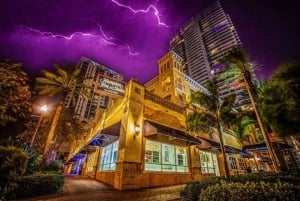Weather Overview

Introduction
Few visitors come to St Petersburg because of its weather. The city is located almost spot on the 60th parallel north of the equator, which runs through Scandinavia, Alaska, the Yukon and Siberia, and is the largest city this close to the North Pole. To give some sense of how far from the equator this is, the 60th parallel south of the equator touches no land at all, as it is far to the south of Tasmania, New Zealand, and Tierra del Fuego and is commonly acknowledged as the start of the Southern, or Antarctic Ocean.
Statistics
Winter temperatures average -6 degrees celsius in January and February, summer temperatures average around +18 degrees celsius in July but the ranges can be extreme. Snow covers the city from December to March, with the deepest coverage of 24 centimetres in February. Average hours of sunshine vary from 276 hours in June, when the sun barely sets, to a gloomy 12 hours in December - yes, that's for the month! Annual precipitation is equivalent to London.
What to expect
The city's location on the Baltic Sea makes the weather at any time of year quite changeable, and wind and rain can last for days. Winters start in October and can be cold, bleak, dark and long; spring is fleeting and memorable for the rasputitsya, the thaws that reduce the winter snow and ice to huge puddles of filthy water and for the slyakot or slush that covers shoes, boots and trouser legs in dirty splash marks for weeks on end; the all too brief summer is often cool and misty, and cold weather fronts move through the city on the back of northerly winds; and autumn, like spring, can be cold, damp, wet, blustery, and soon reverts to winter anyway.
And yet….Each season also has a magic and romance to it that can provide memories to last a lifetime. Walking through Palace Square in mid winter, the lights from the Winter Palace reflecting off the flakes of frost hanging in the air and make it seem like the whole city is being showered in glitter. The deep, subterranean creaking and groaning of the thaw, as thick layers of ice that have been in place for months start to break up, accompanied by the constant percussive splashes and drips and drops of a million small orchestras, makes spring feel as though the earth itself is coming alive. Crossing the Neva on a water-taxi at midnight during the ethereal, other-worldly half-light of the summer's Beliye nochi, enjoying the magnificent architectural ensembles along the banks the warm breezes. Or an autumnal walk through one of the many parks or estates, marvelling at the reds and oranges and yellows of the falling leaves, the boarded up statues adding a wistful air that makes you nostalgic for summer.
So as you huddle against the wind, or tread carefully between icy puddles, or dodge falling icicles, or run for shelter from yet another passing squall, remember to look out for that moment of magic – it could be just around the corner.
 2 °C
2 °C
 overcast clouds
overcast clouds overcast clouds
overcast clouds overcast clouds
overcast clouds overcast clouds
overcast clouds overcast clouds
overcast clouds overcast clouds
overcast clouds light snow
light snow light snow
light snow light snow
light snow light snow
light snow light snow
light snow overcast clouds
overcast clouds overcast clouds
overcast clouds light snow
light snow light snow
light snow overcast clouds
overcast clouds overcast clouds
overcast clouds scattered clouds
scattered clouds scattered clouds
scattered clouds clear sky
clear sky scattered clouds
scattered clouds light snow
light snow light rain
light rain overcast clouds
overcast clouds overcast clouds
overcast clouds light rain
light rain light rain
light rain light rain
light rain light rain
light rain overcast clouds
overcast clouds overcast clouds
overcast clouds light snow
light snow snow
snow light snow
light snow light snow
light snow







